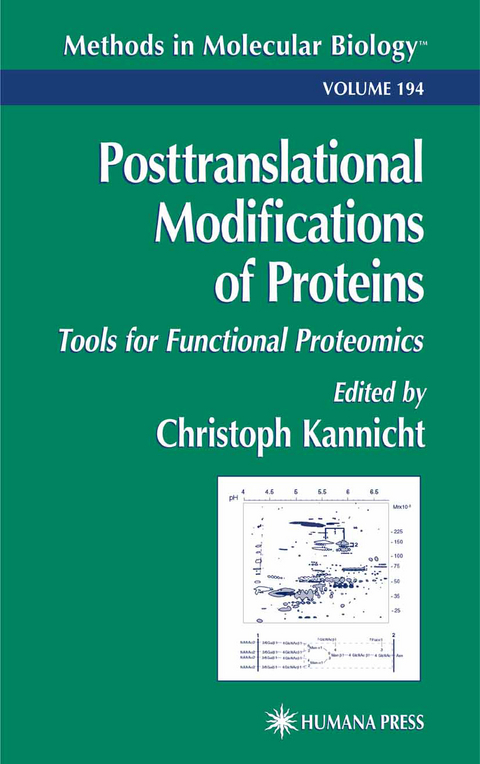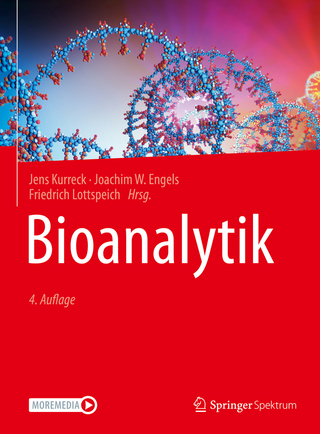
Posttranslational Modification of Proteins
Humana Press Inc. (Verlag)
978-1-4899-3864-0 (ISBN)
Examples of the biological effects of protein mo- fications include: phosphorylation for signal transduction, ubiquitination for p- teolysis, attachment of fatty acids for membrane anchoring or association, glycosylation for protein half-life, targeting, cell-cell and cell-matrix interactions, and carboxylation in protein-ligand binding to name just a few. Full understanding of a specific protein structure-function relationship requires detailed information not only on its amino acid sequence, which is determined by the corresponding DNA sequence, but also on the presence and structure of protein modifications.
Assignment of Disulfide Bonds in Proteins by Chemical Cleavage and Peptide Mapping by Mass Spectrometry.- Carbohydrate Composition Analysis of Glycoproteins Using Highly Sensitive Fluorescence Detection Methods.- Enzymatical Hydrolysis of N-Glycans from Glycoproteins and Fluorescent Labeling by 2-Aminobenzamide (2-AB).- Separation of N-Glycans by HPLC.- Enzymatic Sequence Analysis of N-Glycans.- Immunological Detection of O-GlcNAc.- Analysis of O-Glycosylation.- Characterization of Site-Specific Glycosylation.- Monitoring Glycosylation of Therapeutic Glycoproteins for Consistency Using Highly Fluorescent Anthranilic Acid.- Metabolic Labeling and Structural Analysis of Glycosylphosphatidylinositols from Parasitic Protozoa.- Analysis of S-Acylation of Proteins.- Immunoblotting Methods for the Study of Protein Ubiquitination.- Analysis of Methylation and Acetylation in E. coli Ribosomal Proteins.- Identification of In Vivo Protein Phosphorylation Sites with Mass Spectrometry.- Analysis of Tyrosine-O-Sulfation.- ?-Amidated Peptides: Approaches for Analysis.- ?-Glutamate and p-Hydroxyaspartate in Proteins.- Detection of isoAspartate Residues as a Posttranslational Modification of Proteins and Peptides.- Lysine Hydroxylation and Crosslinking of Collagen.- Heterologous Expression in Endocrine Cells for Analysis of Posttranslational Modifications.- 2D-Electrophoresis: Detection of Glycosylation and Influence on Spot Pattern.
| Reihe/Serie | Methods in Molecular Biology ; 194 |
|---|---|
| Zusatzinfo | 19 Illustrations, black and white; XI, 322 p. 19 illus. |
| Verlagsort | Totowa, NJ |
| Sprache | englisch |
| Maße | 152 x 229 mm |
| Themenwelt | Naturwissenschaften ► Biologie ► Mikrobiologie / Immunologie |
| Naturwissenschaften ► Biologie ► Zellbiologie | |
| ISBN-10 | 1-4899-3864-8 / 1489938648 |
| ISBN-13 | 978-1-4899-3864-0 / 9781489938640 |
| Zustand | Neuware |
| Haben Sie eine Frage zum Produkt? |
aus dem Bereich


